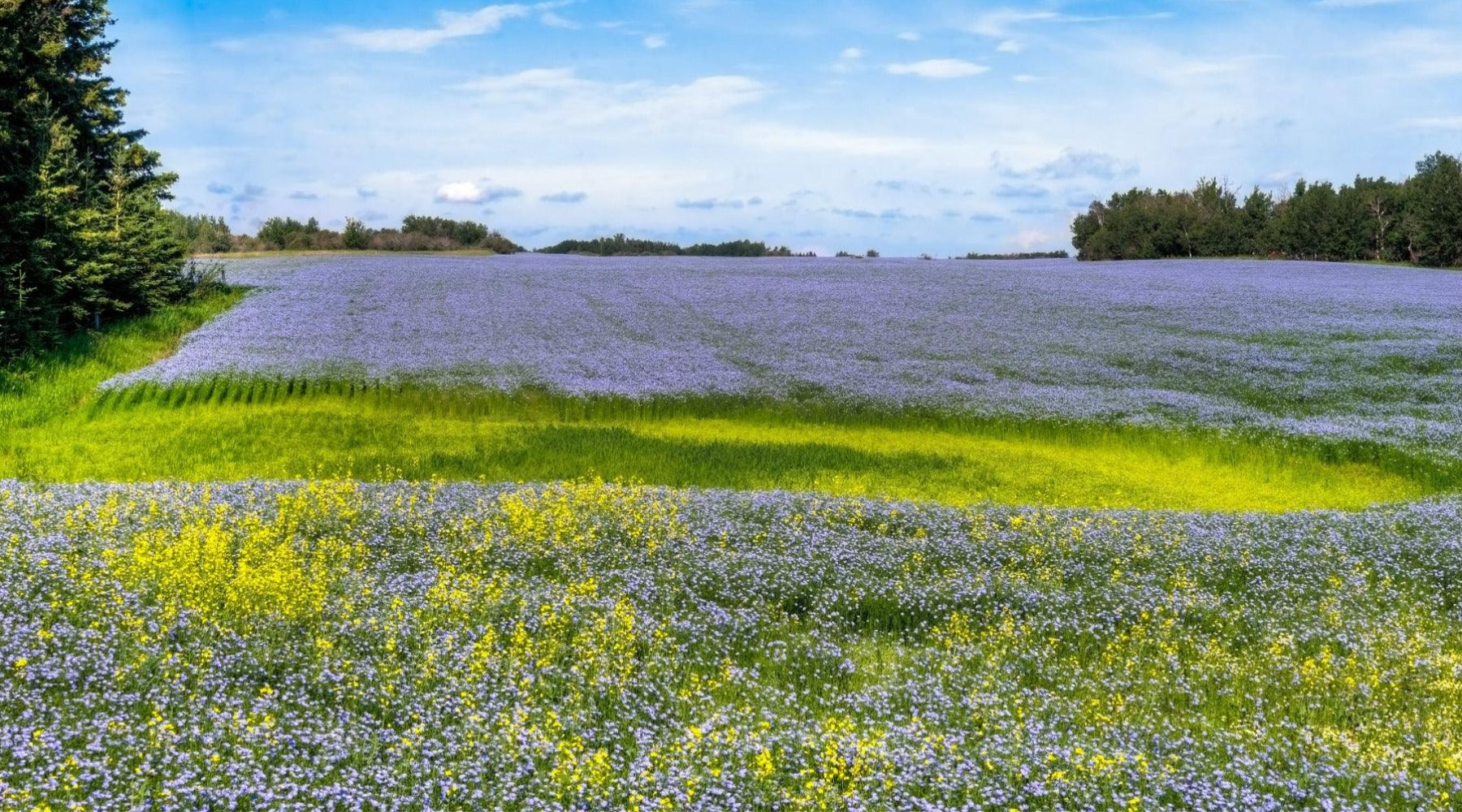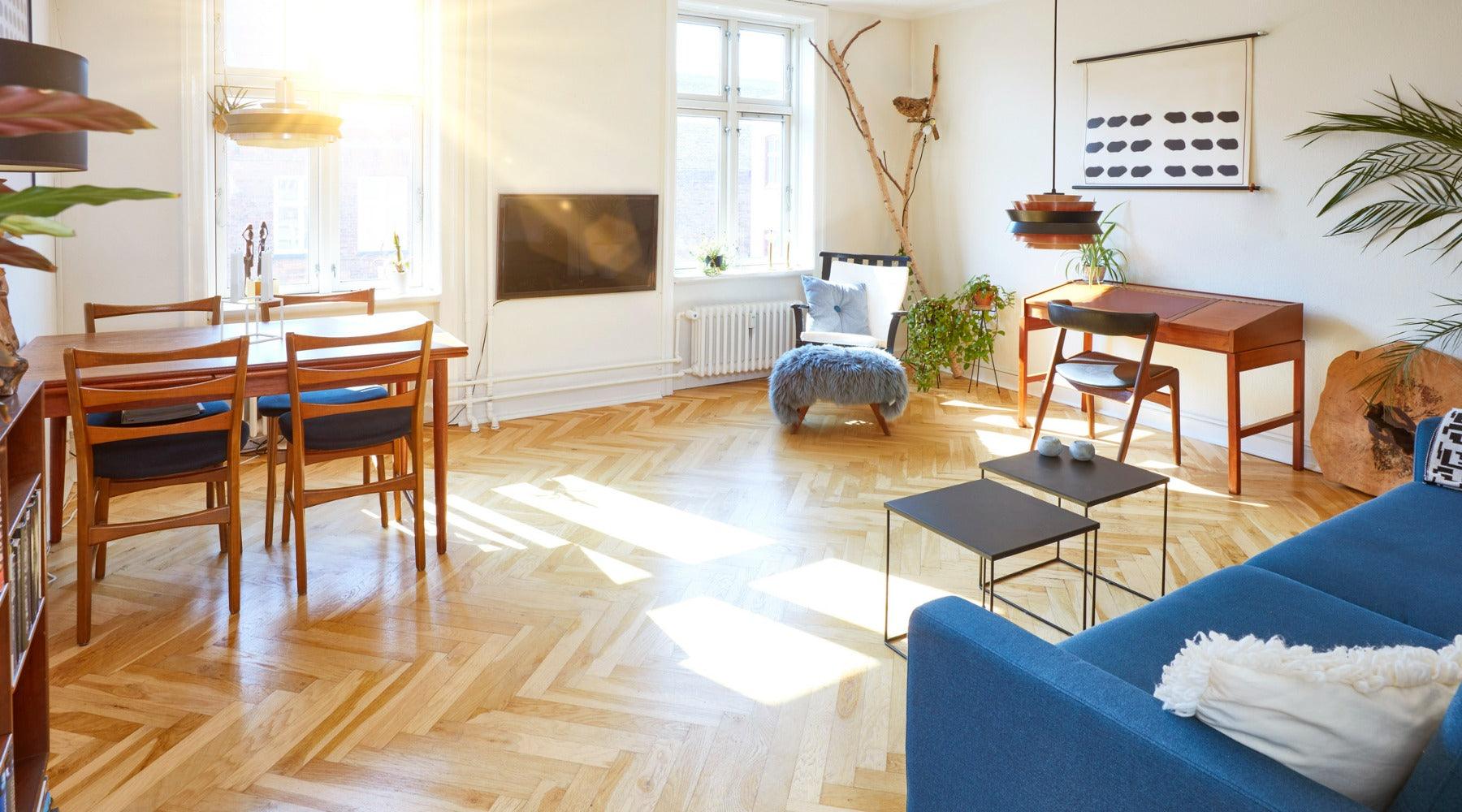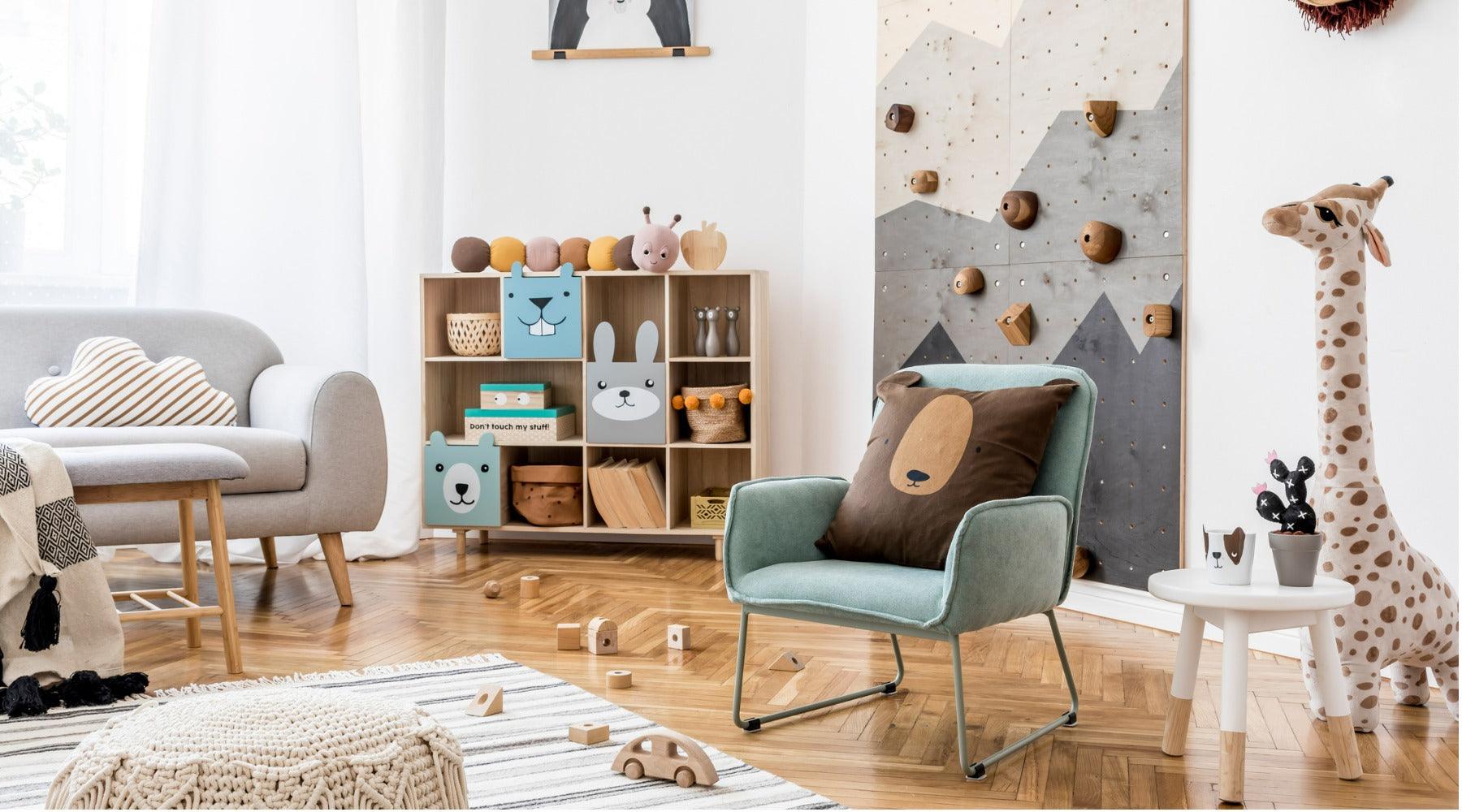
How Flax is Harvested
The flax fields of northern Europe are a remarkable sight—acres of delicate, pale blue flowers stretching to the horizon. If you’re curious how these beautiful flax fields become our European linen duvet covers, wonder no more—here’s the lowdown on everything you need to know about harvesting flax.
An overview of the flax season in Europe
The linen we use for our Scandinavian duvet covers originates from Belgium, France, and the Netherlands—a part of Europe known as the “Flax Belt”, which produces 80% of the world’s total crop. It’s a wet, oceanic climate where temperatures typically stay below 25 C, ideal for growing flax.
The season begins with sowing, which takes place between mid-March and mid-April. The flax then grows over approximately 100 days, irrigated only by rain and dew. By the time it blooms in June, the plants have reached a height of around one meter.
The flax is then harvested—in total, each 100 square feet of flax produces around 1 pound of yarn. Harvesting is followed by retting, the process of separating the fiber from the straw using just rain and microorganisms in the soil. After retting, the flax is sent off for production.

How to know when flax is ready for harvesting
Generally, flax is harvested 30 to 35 days after flowering—usually in the second half of July. Several visual factors are used to determine whether the flax is ready. The stalks are beginning to turn yellow, but there is still some green in them; there are a few flowers still visible, but most have dropped, leaving pale brown seed bolls behind. You may also be able to hear the seeds rattling in the pods.
The timing of the harvest affects the final product. The optimal window for harvesting may be only a day or two, so it is important that farmers time it correctly. Harvesting just a few days after flowering results in a fine flax fiber—the longer the wait, the coarser the fiber will be. Harvesting too early, however, results in unripe seeds that can't be used to start new plants. Waiting too long—until the plants turn dry and brown—results in a brittle fiber, unsuitable for textile production.
As well as visual cues, industrial flax farmers use a formula to calculate the date on which the flax will be ready: this formula is based on the sum of the average temperatures of the preceding months. When this number reaches between 950 and 1,100 (depending on the flax-growing region), the flax is ready to be harvested.

Flax harvesting: pulling, not cutting
Instead of cutting a full field of flax, flax plants are pulled out of the ground, a process aptly known as “pulling.” This preserves the length of the fibers, resulting in a smoother fabric.
Once the crop has been checked for readiness, the flax is harvested using specialized pulling machines. The roots of the flax plants remain in the ground where they enrich the soil, increasing the following year’s crop yield by up to 20%. The seeds are extracted during pulling and will be saved for next season.
The pulled plants are laid on the ground in swathes—one-meter-wide layers of flax. The swathes of flax will be retted in the field over approximately three weeks and will be turned halfway through.

From production to product
Once the hard outer casing of the plant has broken down, the flax is sent off for scutching, a mechanical, chemical-free process that separates long and short fibers. The short fibers are used for paper and felt, while the long fibers are reserved for fabric. The long fibers are combed and stretched into ribbons, before being spun in water heated to 60 C—this separates and smooths the fibers.
The linen is then bleached in accordance with European environmental rules—using peroxide rather than chlorine-based bleach—before being sent to a textile mill in Guimaraes, Portugal to be woven into our Danish-style bedding.
The process from harvesting to final product takes just under one year, so the flax being harvested now will likely be available as Modern Dane bedding by the middle of next year. But there’s no need to wait that long—check out our organic linen duvet covers made from last year’s crop, and don’t forget to share a picture of your purchase with us on Instagram, Pinterest, Facebook or Twitter!





Leave a comment
This site is protected by hCaptcha and the hCaptcha Privacy Policy and Terms of Service apply.